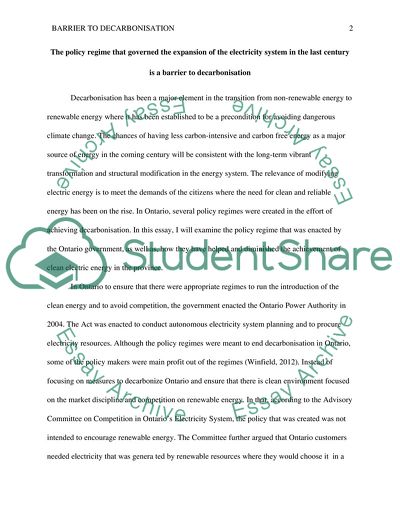Cite this document
(“The policy regime that governed the expansion of the electricity Essay”, n.d.)
The policy regime that governed the expansion of the electricity Essay. Retrieved from https://studentshare.org/environmental-studies/1668300-the-policy-regime-that-governed-the-expansion-of-the-electricity-system-in-the-last-century-is-a-barrier-to-decarbonisation
The policy regime that governed the expansion of the electricity Essay. Retrieved from https://studentshare.org/environmental-studies/1668300-the-policy-regime-that-governed-the-expansion-of-the-electricity-system-in-the-last-century-is-a-barrier-to-decarbonisation
(The Policy Regime That Governed the Expansion of the Electricity Essay)
The Policy Regime That Governed the Expansion of the Electricity Essay. https://studentshare.org/environmental-studies/1668300-the-policy-regime-that-governed-the-expansion-of-the-electricity-system-in-the-last-century-is-a-barrier-to-decarbonisation.
The Policy Regime That Governed the Expansion of the Electricity Essay. https://studentshare.org/environmental-studies/1668300-the-policy-regime-that-governed-the-expansion-of-the-electricity-system-in-the-last-century-is-a-barrier-to-decarbonisation.
“The Policy Regime That Governed the Expansion of the Electricity Essay”, n.d. https://studentshare.org/environmental-studies/1668300-the-policy-regime-that-governed-the-expansion-of-the-electricity-system-in-the-last-century-is-a-barrier-to-decarbonisation.


